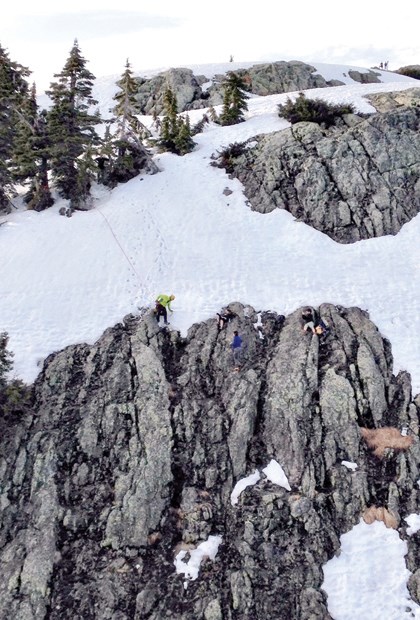Two hikers had to be flown home from the top of Mount Seymour after becoming gripped by fear and stranded on a steep rock face Thursday evening.
The man and woman, both in their early 30s, parked in the Mount Seymour parking lot and set out for Elsay Lake, a long, remote hike in summer conditions.
"They were unprepared for what they found as they started to climb. They were in snow almost right away," said Doug Pope, North Shore Rescue search manager. "The lady was in sandals, hiking in snow."
As the couple went north, they lost the trail, which was buried under snow, and instead of going around Seymour as intended, they ended up climbing up to the first peak of Seymour.
On their way up, they scaled a steep rock face before facing another belt of snow where they became stranded.
"The lady got very scared and was basically frozen in fear. Couldn't go up. Couldn't go down," Pope said.
From there they called 9-1-1 and North Vancouver RCMP paged North Shore Rescue.
"As luck would have it, we had an experienced member right near by who got the page and came up on the radio. He got to them in a matter of minutes," Pope said. "He calmed her down and helped paint the picture for me as search manager to determine the rescue."
Pope arranged for a Talon helicopter and three North Shore Rescue volunteers to head to the top of Seymour. Those rescuers then descended the peak to the rock face where the other volunteer and rescue subjects were waiting. Using a rope as a hand line, they escorted the hikers up to the peak and gave them a lift back to North Shore Rescue's Bone Creek base, shaken but uninjured. "It's a classic thing this time of year," Pope said. "It's sunny and warm down in the city but it's different conditions in the local mountains."
Anyone planning to go above 1,000 metres elevation should be wearing sturdy boots, and carrying an ice axe. That's in addition to navigational aids including a map, compass and GPS.



